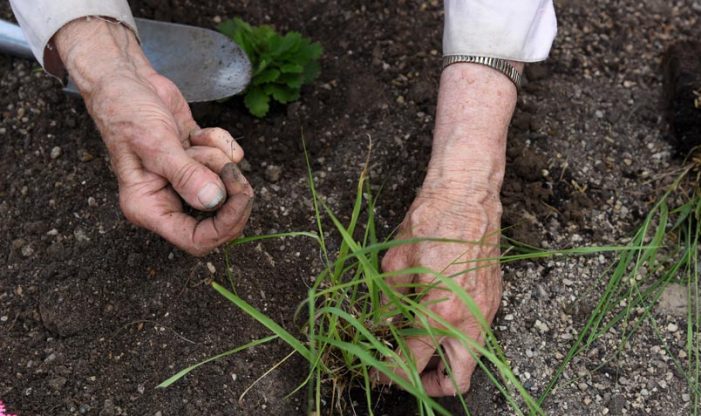At the corner of Lake Drive and Brown Deer Road, Center staff and volunteers have begun planting a new haven of native plants surrounding our sign. Butterfly Bend will welcome birds, bees, butterflies and other insects, and people arriving at the Center or driving by. Volunteer John Pearce remarked, “We’re using visual honey to attract lots of audiences: butterflies, bees, birds – and the human variety too!”
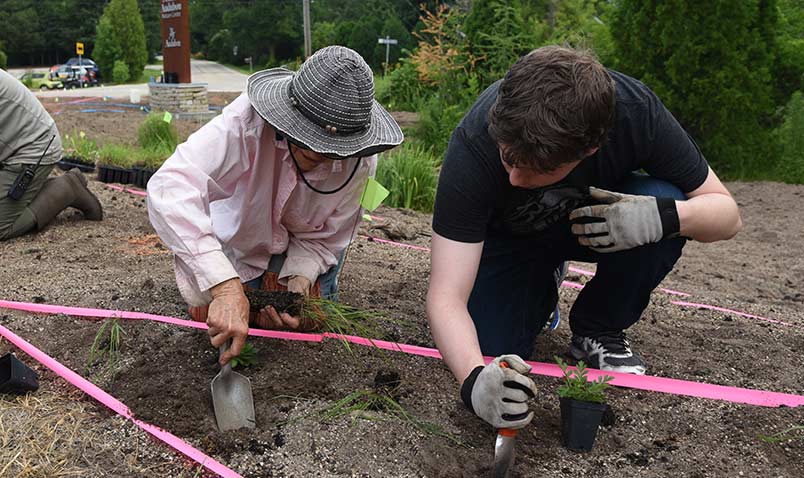
Oasis for Native Plants, Animals, Insects
Butterfly Bend takes artistic inspiration from what might be an unexpected source. The undulating flow of grasses, sedges, and forbs are inspired by currents in Lake Michigan. Different plants have different needs, including moisture, sunlight, soil type, and which plants are near them. The lower portion of the area holds a greater portion of moisture, and as such those plants are different than the plants closer to the road. Altogether, 10 plant communities are represented in Butterfly Bend.
Once complete, more than 4,500 plants will have gone in to Butterfly Bend. 60 species will be sown inside the parcel, including 12 grasses and sedges and 48 forbs. A 2-to-1 ratio of grasses and sedges to forbs is being utilized in the planting. Sedges and grasses help provide shade, protection, and root competition for the forbs that provide the islands of color planted within the green waves.
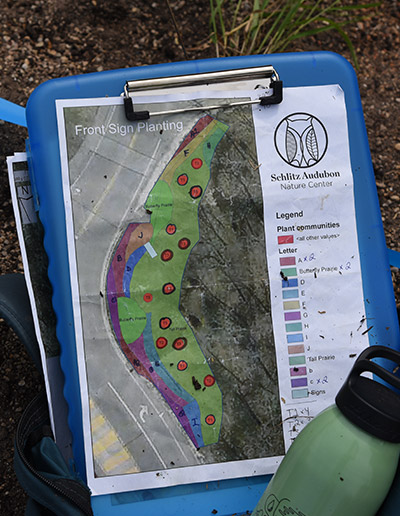
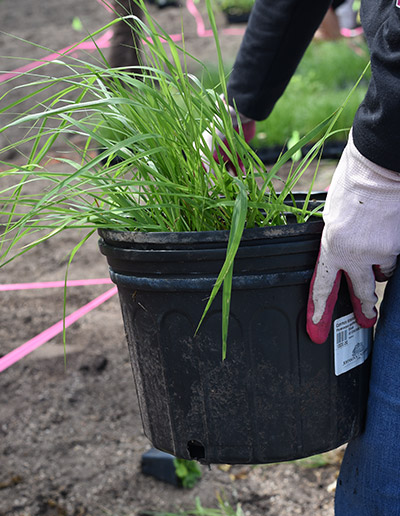
To prevent the introduction of invasive species, the Center uses an engineered soil, which consists of 70% sand and 30% compost. This soil is “clean” meaning it will not contain any external seeds. This blend of soil is extremely easy for securing roots and also drains better than our clay-oriented soils. The plants will take up to three years to entirely establish their roots and then blossom with spectacular colors. “This planting reflects the diversity we’re aiming to achieve at the Center,” said Center Director of Conservation Marc White.
A Volunteer-Driven Effort
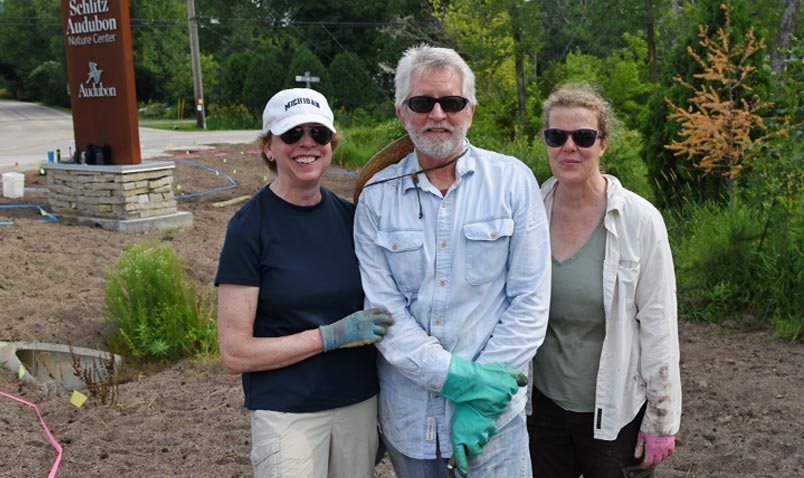
Betsy Vokac, John Pearce, and Jane Shero created the plan for Butterfly Bend.
“It’s because of every person who volunteers at the Center that we’re able to accomplish this important work to support native flora and fauna,” said Marc White. Working with our Conservation staff, Butterfly Bend was thoughtfully designed by three of our experienced land stewardship volunteers: Jane Shero, John Pearce, and Betsy Vokac. Each of these volunteers has extensive experience gardening with native plants. In August 2017, Marc asked them to come up with a design for the location. “At first it was a little daunting to imagine,” said Jane Shero. “We were wading around in hip-high grass, trying to figure out which plants should go where.”
The requirements for Butterfly Bend were that it had to have all native plants, look natural in appearance, and be so visually stunning that the 2 million annual drivers who pass the corner would take note. When considering their design of the area, Betsy Vokac said, “Let’s plant something that gets people to look and say, ‘Wow, what’s going on there?” We look forward to many years of motorists and cyclists admiring the blossoms at Butterfly Bend, and stopping in to learn what’s going on at Schlitz Audubon.
